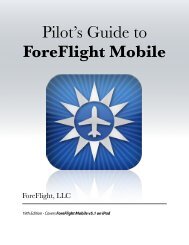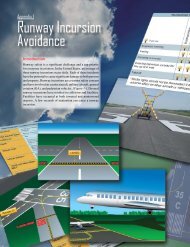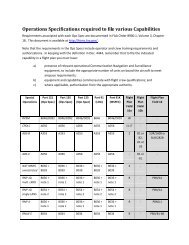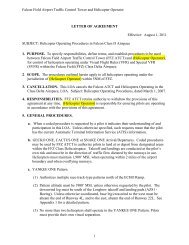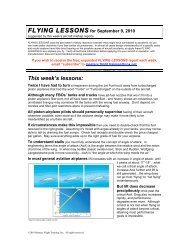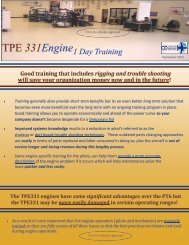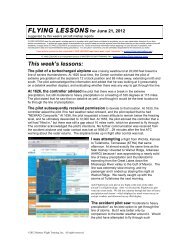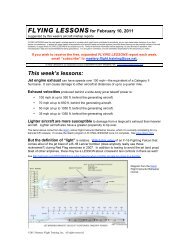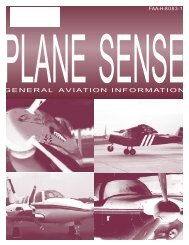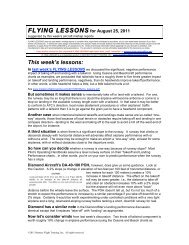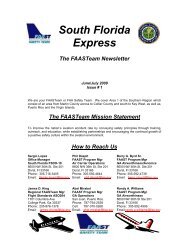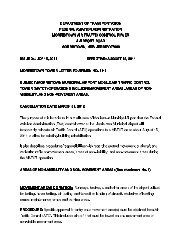WingX 2.0 User Manual - FAASafety.gov
WingX 2.0 User Manual - FAASafety.gov
WingX 2.0 User Manual - FAASafety.gov
Create successful ePaper yourself
Turn your PDF publications into a flip-book with our unique Google optimized e-Paper software.
Known Winds Aloft - Calculating Heading, Ground Speed, and WCA<br />
By using known winds aloft, <strong>WingX</strong> allows a pilot to accurately calculate the required heading and the resulting<br />
groundspeed and Wind Correct Angle (WCA). The following pieces of data must be entered:<br />
• True Airspeed (TAS): The TAS can either be entered directly or calculated by <strong>WingX</strong> if the pilot<br />
enters their Calibrated Airspeed and Temperature (see Airspeeds above). <strong>WingX</strong> propagates the TAS<br />
value down into the TAS text box for winds aloft thereby freeing the pilot of entering the TAS.<br />
• Course (Crs): The course that the aircraft is required to make over the ground. For example, if the<br />
aircraft dead reckoning to an airport, then the pilot should use the calculated direction to the airport.<br />
Alternatively, the GPS or LORAN system may display desired course.<br />
• Wind Direction (WDir): The winds aloft direction as reported by the FSS Weather Report, Flight<br />
Watch, or other weather reporting entity.<br />
• Wind Speed (WSpd): The winds aloft speed as reported by the FSS Weather Report, Flight Watch, or<br />
other weather reporting entity.<br />
• Area (optional): Without entering the area in which the flight is occurring, the winds aloft can only be<br />
assumed to be relative to Magnetic North. This is not consistent with Flight Service weather reports<br />
since they report the winds aloft relative to True North. To have the winds aloft be assumed to be<br />
relative to True North, enter a nearby airport, navaid, or fix and <strong>WingX</strong> will perform the necessary<br />
variation adjustment for accurate results.<br />
Example: Ensure that the “Known Wind” checkbox is checked to use the<br />
known winds aloft; i.e. that the winds are known from a source such as<br />
DUATs or Wingx’s Weather page. Using an example scenario, the True<br />
Airspeed is 155 knots, the Course is 10˚ and the wind is 330@25. For<br />
purposes an example, in these calculations the Area field has been left blank<br />
thereby causing the results to be displayed relative to Magnetic North.<br />
Runway Wind - Headwind and Crosswind Components<br />
The majority of aircraft accidents are of the “fender-bender” variety that occurs on landing and more often than<br />
not, the word “wind” appears in the accident report. Crosswind takeoff and landing skills diminish quickly<br />
without practice and this is exacerbated by the fact that runways are usually built to face into the prevailing wind<br />
thereby increasing the lack of crosswind practice.<br />
Another advantage to being able to calculate both the headwind and crosswind is that these numbers are often<br />
written in a solo student’s logbook by a Certificated Flight Instructor (CFI) as one of the conditions for that<br />
student’s solo flights.<br />
75




